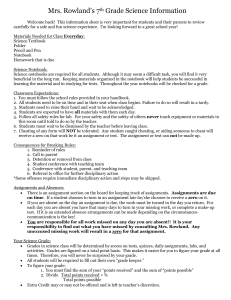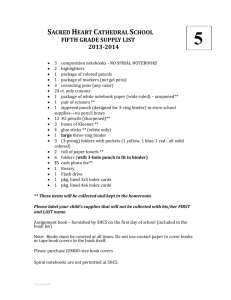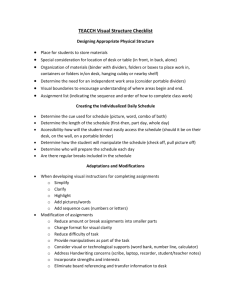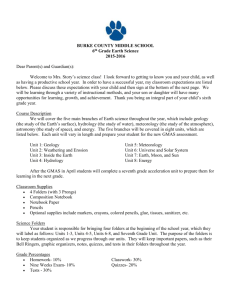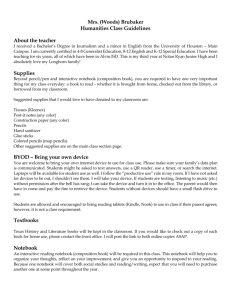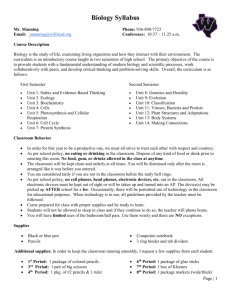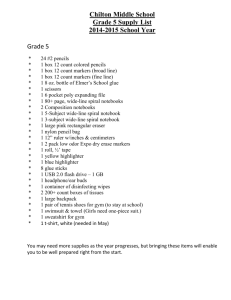November Second Session
advertisement
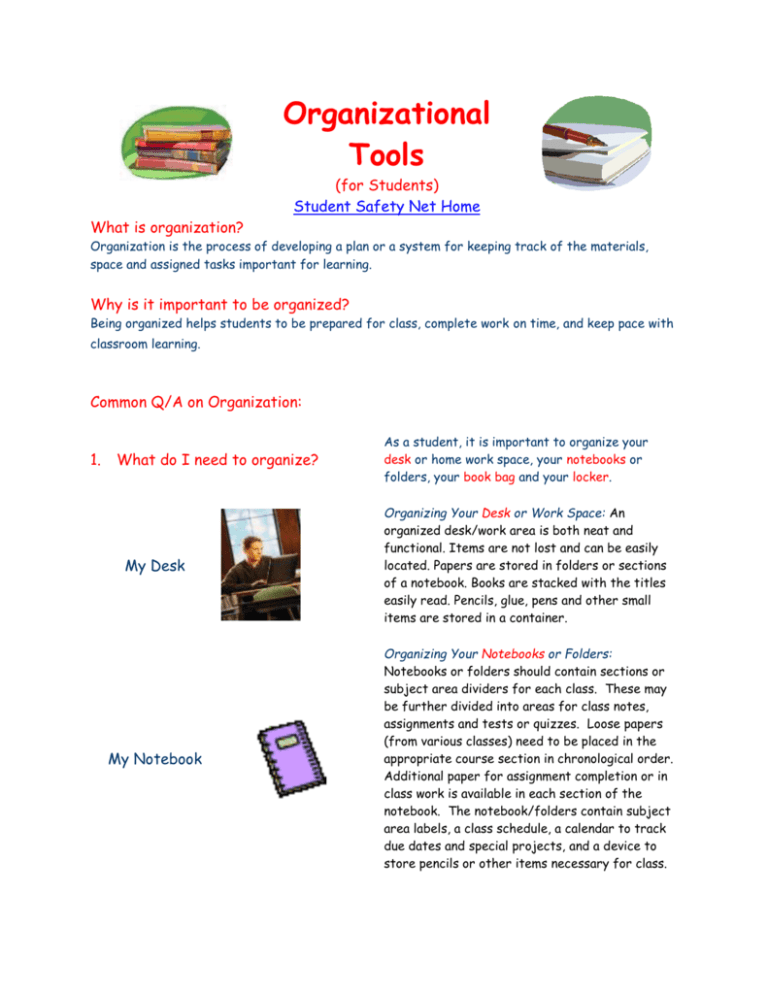
Organizational Tools What is organization? (for Students) Student Safety Net Home Organization is the process of developing a plan or a system for keeping track of the materials, space and assigned tasks important for learning. Why is it important to be organized? Being organized helps students to be prepared for class, complete work on time, and keep pace with classroom learning. Common Q/A on Organization: 1. What do I need to organize? As a student, it is important to organize your desk or home work space, your notebooks or folders, your book bag and your locker. My Desk Organizing Your Desk or Work Space: An organized desk/work area is both neat and functional. Items are not lost and can be easily located. Papers are stored in folders or sections of a notebook. Books are stacked with the titles easily read. Pencils, glue, pens and other small items are stored in a container. My Notebook Organizing Your Notebooks or Folders: Notebooks or folders should contain sections or subject area dividers for each class. These may be further divided into areas for class notes, assignments and tests or quizzes. Loose papers (from various classes) need to be placed in the appropriate course section in chronological order. Additional paper for assignment completion or in class work is available in each section of the notebook. The notebook/folders contain subject area labels, a class schedule, a calendar to track due dates and special projects, and a device to store pencils or other items necessary for class. 2. My Book Bag Organizing Your Book Bag: It is very easy to overload a book bag causing it to be too heavy to carry with ease. With that in mind, work to carry only the essentials back and forth on a regular basis. Designate certain zippered pockets for specific items. Small items (pencils, pens, highlighters, math tools) should be located for easy access. Notebooks and textbooks are stacked according to size and loose papers are in folders or notebook sections. Book bags are regularly reviewed for contents that can be discarded. My Locker Organizing Your Locker: Books should be placed in the lockers either standing up-right or laying down with their titles easily visible. If possible place those books needed for morning classes in one part (side, top, bottom) of the locker and books needed for afternoon classes in another part (side, top, bottom). Shelves or storage devices specifically designed for lockers may be helpful. Containers (bins, zippered cases) to store loose items such as pens, pencils, calculators, rulers, etc. will add to the organization and ease of access of a locker. How do I organize my assignments? 3. What do I do if I keep losing my assignments? Especially at first, it is important to use a planner or some type of assignment book to record your work and its completion dates. Be sure to include any special notes or comments about materials that will be needed to complete the assignment (worksheets, textbooks, website references, etc). As work is completed, put a check mark or other designation to show the work is done. Put completed assignments in your notebook or folder in the section designated for that class. Check your planner frequently during the day/week to make sure you are not forgetting any work. Lost assignments are often a result of not labeling the work correctly and/or not placing the work in the appropriate folder or section of the notebook. As you begin each assignment, put a heading on the paper (according to the teacher’s directions) to indicate the class and the specific problems or assignment. As you complete the assignment or temporarily finished working on it, place the work in its appropriate course section or folder. Remember to regularly (once a week) review your notebook or folder to eliminate old papers or assignments. 4. How should I organize my study space? A good study space should include a hard flat surface (desk, table) large enough to include books, paper and other study materials (pens, calculator, dictionary), adequate lighting and a shelf or other storage area. The study space should be consistent and not constantly changing and should be relatively free from distractions. Organize the space chosen for consistency, placing study materials in the same location from one time to the next. That eliminates time lost while looking for things. 5. How do graphic organizers support organization and learning? For the visual learner in particular, graphic organizers are often a helpful study tool. Graphic organizers allow students to record important information using a combination of words, phrases, pictures, and connecting symbols. There are many types of graphic organizers: http://www.teachnology.com/worksheets/graphic/ to support different tasks and projects. The structure of the graphic organizer causes important ideas to become readily apparent and more easily remembered. Student Safety Net Home

